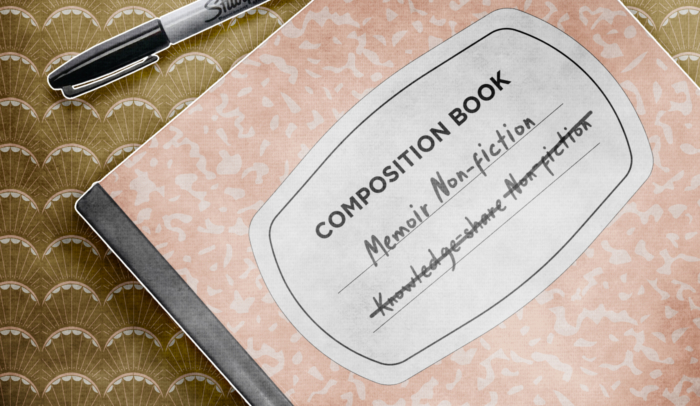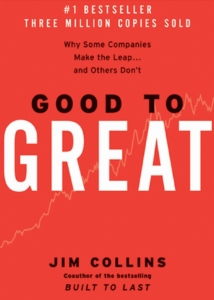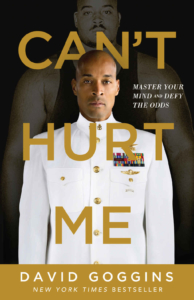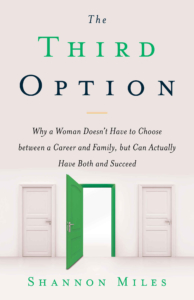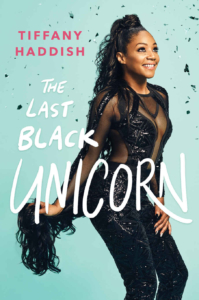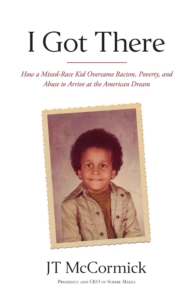Don’t Have Time Right Now?
Not sure what kind of non-fiction book you want to write? You’re not alone.
Many non-fiction Authors really struggle when deciding whether to write a memoir or a conventional non-fiction book.
Why is this such a hard decision?
Because many people want their book to do two things at the same time:
They want to share their story, but they also want to teach something specific and tangible to people.
So, which is the right one?
The answer depends on your intent for the book.
[Before you dive into this article, let me be upfront: this post is about non-fiction books. That’s our specialty. In fact, Scribe has published more than 600 non-fiction books since 2014.
If you want to write fiction, I recommend reading The Fiction Formula: The New Rules of Self Publishing Success.
But if you want to write non-fiction, this post will help you decide what kind of non-fiction book you should write.]
The 2 main types of nonfiction
There are two main types of non-fiction books:
- Knowledge-share
- Memoirs
These two kinds of books are defined by intent—the Author’s intent in writing it and the reader’s intent in buying it.
Knowledge-share non-fiction
Knowledge-share non-fiction is any non-fiction book you’re writing primarily to help people solve a problem or create a transformation.
In short, you’re writing it to share your knowledge.
Just about all business books fall into this category:
“Here’s a new idea for how to solve a problem or create a transformation in your life.”
That’s a knowledge-share book.
Personal development and self-help books are in this category, too. Basically, any book that’s about helping people get better is a knowledge-share book.
Knowledge-share books include:
- Business books
- Personal development books
- Self-help books
- How-to books
Memoir non-fiction
A memoir is a non-fiction book that’s about you.
You’re writing it to share your story.
Memoirs can take various forms, but they’re always about you:
- Personal stories
- An autobiography
- A family legacy piece
The reader’s intent
Knowledge-share non-fiction
The Author’s intent for a knowledge-share book is to deliver specific value, and the reader’s intent is to receive that value:
“Help me solve my problem or get a transformation.”
Memoir non-fiction
The Author’s intent for a memoir is to move or entertain the reader through the Author’s own story.
The reader’s intent is also to be moved and entertained, but in a very specific way:
“I want to learn about myself from your story.”
I’m going to dig into that one for a minute—because it’s important.

Nobody reads your memoir to learn about you. They read your memoir to learn about themselves.
I’m not trying to be harsh. I’m trying to share a simple truth about human nature.
If you read through this post and decide to write a memoir, you need to understand that the reader’s intent in buying and reading your memoir is NOT to help you.
Readers want to be entertained and to learn about themselves by reading your book.
What if I want to help people by telling my story?
I’ve discussed this topic with hundreds of Authors in our workshops, and this is the question I hear from them the most.
Know what I tell them?
That’s great! But you need to focus on one or the other.
Your book can be:
- PRIMARILY about teaching something OR
- PRIMARILY about telling your story
I’ve said before that there aren’t any hard-and-fast rules when it comes to writing your book, and that’s generally true. But this isn’t the kind of rule you want to break.
Plenty of people have broken this one, and their books have paid the price for that decision.
Here’s the problem:
If you try to do both equally, you won’t succeed at either.
One intention has to be primary and the other secondary. Whichever you pick will determine the course of your book.
Either way, it can contain the same information (basically), but the different intent gives your book a completely different angle. To prove it, here’s a concrete example.
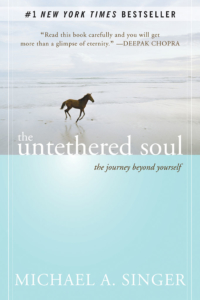
When Michael Singer published The Untethered Soul, it sold millions of copies. It’s widely touted as a definitive book on learning how to meditate and become enlightened.
The Author shares pieces of his own story throughout the book, but they’re chosen specifically to be in service of his main goal: helping people learn how to meditate and become enlightened.
In bookstores, you’ll find it in the self-help section.
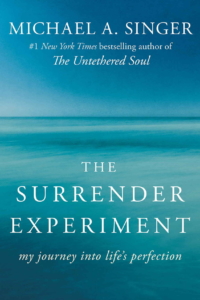
Now, the same Author also wrote The Surrender Experiment, a book about how he personally became enlightened. The content is very similar, but it focuses on his own journey.
In fact, it’s all his story. He doesn’t include any instructions for the reader or any how-to advice that sounds like “here’s how to do this yourself.”
That book is in the memoir section.
Which proves my point:
The main reason you need to pick one primary direction is that readers will want to know what kind of book it is when they’re deciding whether to buy it.
Are they going to learn how to do something? Or are they going to learn about themselves by reading your own personal story?
Knowledge-share non-fiction
If you’re writing your book PRIMARILY to teach people something, that book still can (and should) have your own experience in it.
But every personal story in the book has to be in service of sharing knowledge.
David Goggins’ book, Can’t Hurt Me, includes specific lessons for readers throughout the book.
You’ll find it in the self-help section.
Memoir non-fiction
If you’re writing your book PRIMARILY to move or entertain the reader with your story, then your book shouldn’t try to tell the reader what to get out of it.
Just tell your own story and let the reader decide what to take from it.
Tiffany Haddish’s book, The Last Black Unicorn, doesn’t include any specific lessons or how-to’s for the reader—it doesn’t try to tell them what to get out of it.
You’ll find it in the memoir section.
Each kind of non-fiction has a different job
Are you starting to see a pattern? The book’s essential job determines which shelf it belongs on.
The job of a knowledge-share book is to explain the solution to a problem or to tell the reader how to create a transformation in their life. That’s why it belongs in the self-help section.
The job of a memoir is to tell your story as honestly as possible so the reader can learn about their own life. These belong in the memoir section.
Which kind of non-fiction book should I write?
There’s no right or wrong answer to this question. It only depends on what you want your book to accomplish for you.
Still, I’ll leave you with some general rules of thumb for guidance.
1. If your primary goal is business-related, a knowledge-share book is usually best.
David Goggins, for example, wanted his book to establish him as an authority in the self-help space, thus elevating his speaking fees and getting him more attention.
It has 100% accomplished all that and more. In fact, his book has received so much attention that it was recently featured in an Audible ad.
2. If your primary goal is related to your own personal growth, then it’s usually a memoir.
Are you looking to grow personally by sharing your story?
Do you think that story might help or inspire someone, but not necessarily teach them how to do something specific?
If that sounds like you, chances are you should be writing a memoir.
3. You can write both, but write them one at a time.
If you want to accomplish both of those goals—helping people learn how to do something and sharing your story for your own personal growth—do what Michael Singer did.
Write two books. Just make sure each book has ONE primary job.
4. Still not sure? Ask yourself what shelf you want to see your book on.
Where do you imagine readers looking for your book?
- Knowledge-share books belong in the self-help (or business) section.
- Memoirs belong in the memoir section.
5. Don’t write a meatball sundae.
Seth Godin wrote a marketing book titled Meatball Sundae. Sounds gross, right?
Exactly.
Meatballs can be delicious. Sundaes can be delicious. But you don’t want to eat them together.
My point?
Your book should have ONE job.
It should be a meatball, or it should be a sundae. It shouldn’t be both.
Readers need to know what your story IS and what they’re going to get out of it.
So, if you want both, write one of them first. Save the sundae for dessert.


